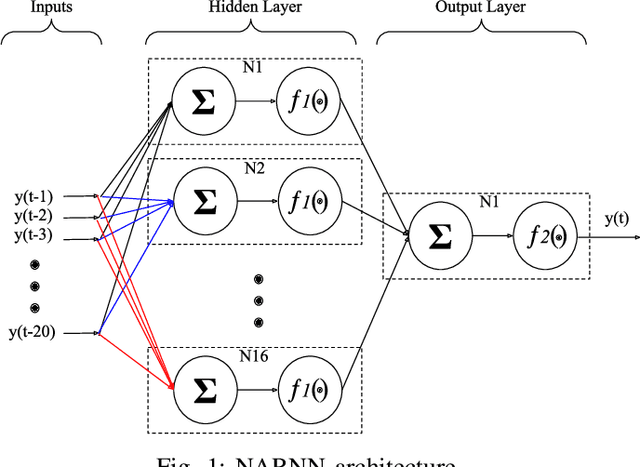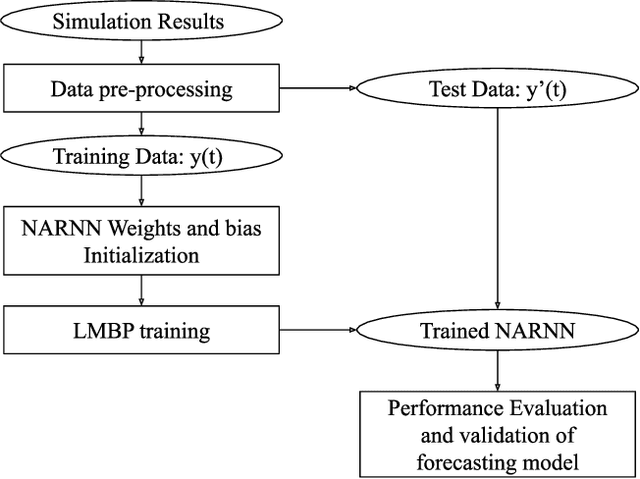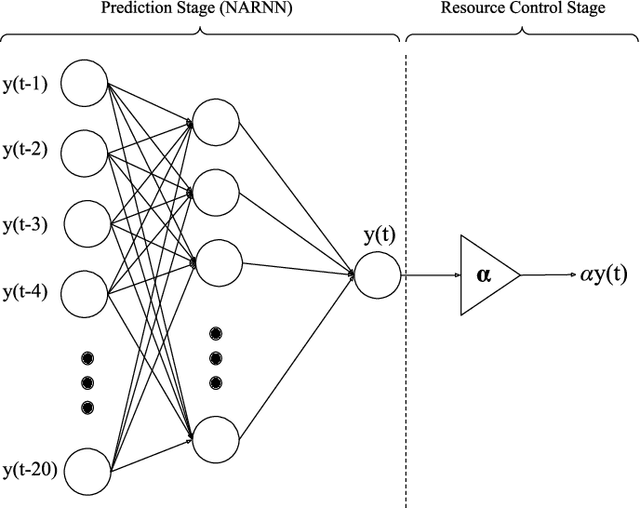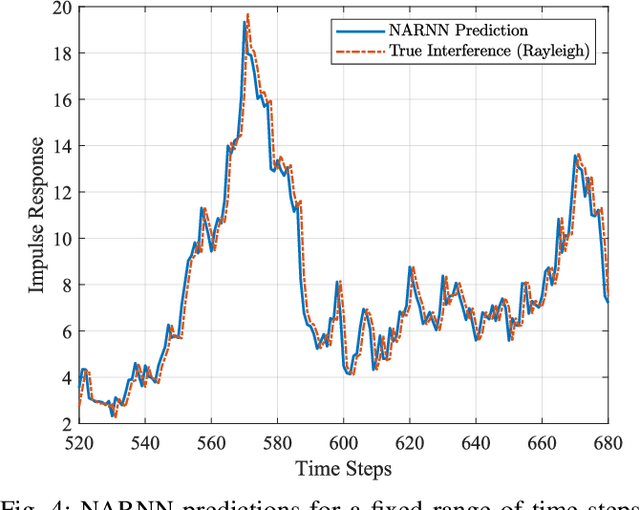A Nonlinear Autoregressive Neural Network for Interference Prediction and Resource Allocation in URLLC Scenarios
Paper and Code
Nov 28, 2021



Ultra reliable low latency communications (URLLC) is a new service class introduced in 5G which is characterized by strict reliability $(1-10^{-5})$ and low latency requirements (1 ms). To meet these requisites, several strategies like overprovisioning of resources and channel-predictive algorithms have been developed. This paper describes the application of a Nonlinear Autoregressive Neural Network (NARNN) as a novel approach to forecast interference levels in a wireless system for the purpose of efficient resource allocation. Accurate interference forecasts also grant the possibility of meeting specific outage probability requirements in URLLC scenarios. Performance of this proposal is evaluated upon the basis of NARNN predictions accuracy and system resource usage. Our proposed approach achieved a promising mean absolute percentage error of 7.8 % on interference predictions and also reduced the resource usage in up to 15 % when compared to a recently proposed interference prediction algorithm.
 Add to Chrome
Add to Chrome Add to Firefox
Add to Firefox Add to Edge
Add to Edge